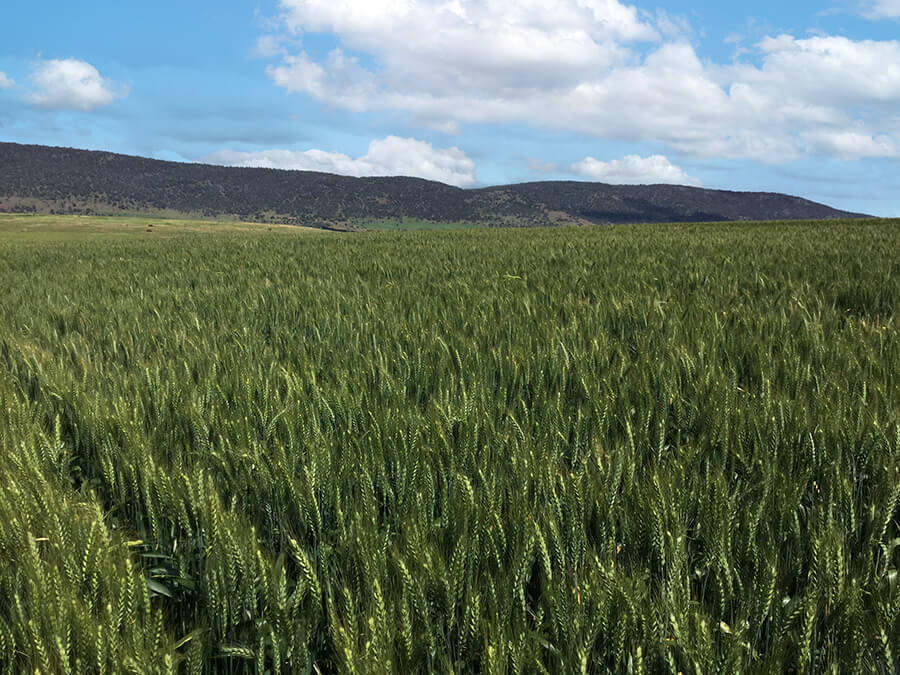
Independent
Trial
Location
Campbell Town, TAS, Australia
Conducted by
Southern Farming Systems
Tasmania Dual-purpose wheat trial
Successful farmers make the most out of every resource available to them. For some farmers, dual-purpose wheat is proving to be one of those resources. Dual-purpose wheat is a viable option for high rainfall zones and irrigation areas, where farmers are adopting and successfully integrating it into their farming systems. If managed correctly it can be grazed through the winter months. This allows farmers to capitalise on the strong commodity pricing for both beef and sheep, while still harvesting a crop at the end of the season.
To maximise the return on investment for a dual-purpose cereal, it is important to have:
Healthy plants (above and below ground)
A good tiller number per square metre
A soil system that can deliver the required nutrients to a rapidly growing crop, post grazing.
Whilst the timing of when stock are removed, the volume of growing season rainfall and the variety of cereal planted all influence the quantity of dry matter produced and grain harvested, how nutrients are delivered and how plants access these nutrients also play a key role in the productivity of the system.

Aim
To evaluate the effect of a BioAg fertiliser program on dual-purpose wheat.
Method
A randomised, replicated plot trial was set up and completed in Campbell Town, Tasmania to evaluate a unique fertiliser regime from BioAg, compared to the standard practice for this region. A list of inputs and timings for the trial are shown in the table below.
The plots were planted on the 16th of May and were allowed to grow, without any grazing pressure until mid-August. Prior to the stock being introduced a SAP analysis was completed by AgVita Pty Ltd. Once introduced, the stock were allowed to graze up until the 30th of August, which was the growth stage GS30.
Treatment list
Results
The plots were harvested on the 21st of January 2017, with both a yield and grain quality assessment completed. The BioAg plots increased yield by 17% over the control being 1.2t/ha.
Conclusion
The strategy behind the BioAg treatment was to deliver improved grazing and higher yields at harvest. The SAP analysis prior to grazing reveals no significant difference in the nutrient content of feed between the BioAg and conventional programs The at harvest trial data highlights that the BioAg treatment produced a statistically significant yield response over the control. This was achieved from improved tillering and recovery post grazing, which can be seen in the grain head count per square metre.
Download independent trial
For the full trial, including methods, results and conclusion, download here.

Recent Comments